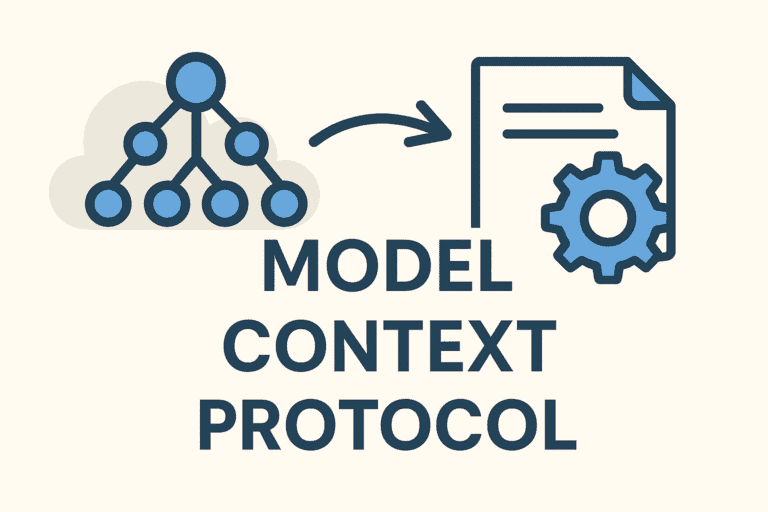Brand tracking is the systematic, ongoing monitoring of how your brand is perceived, remembered, chosen, and experienced by your target audience over time. Instead of a one-off survey or an isolated campaign analysis, brand tracking embeds itself into your regular marketing processes, delivering insight into long-term trends in awareness, sentiment, preference, and brand health.
Where standard market research snapshots your brand at a moment in time, brand tracking offers a “movie” rather than a “photo.” It reveals how your brand is evolving, how marketing and external events affect perception, and where vulnerabilities or opportunities lie.
In practice, brand tracking typically draws from multiple data sources—surveys, social listening, web analytics, competitive benchmarks—and distills them into a coherent narrative that guides strategic decisions.
Why Brand Tracking Matters
If you think of your brand as one of your most valuable assets, then not tracking its health is like driving blind. Here are some compelling reasons to make brand tracking a core part of your marketing strategy:
Detect reputation problems early
Consumer sentiment can shift rapidly. With continuous tracking, you can spot negative trends before they erupt into full-blown crises.Optimize budget allocation
You’ll know which campaigns or channels actually boost awareness, sentiment, or preference—and can reallocate resources toward what works.Benchmark against competitors
Tracking your brand in isolation gives partial insights. Comparing your performance relative to competitors and the category helps you understand where you stand.Support premium positioning and pricing
Strong brand metrics (like high preference or recommendation) help justify price premiums and command loyalty.Anchor long-term brand strategy
Marketing efforts are often fragmented. Brand tracking offers a north star, aligning messaging, product decisions, and customer experience with how people perceive your brand.Validate or challenge assumptions
What you think your brand stands for may differ from how audiences see it. Tracking gives you evidence to course-correct.
Brand tracking closes the gap between internal branding intentions and external perceptions.
Core Metrics and KPIs in Brand Tracking
Not all metrics are equally useful in every context. Below are the key dimensions and specific KPIs you should consider in your brand-tracking program.
1. Brand Awareness
Unaided Awareness (Top-of-Mind): When asked to name brands in your category, how often your brand is mentioned without prompting.
Aided Awareness (Prompted): When given a list of brands (including yours), whether respondents indicate they are aware of yours.
Familiarity / Depth of Awareness: How well respondents feel they know your brand (e.g. “heard of but not familiar,” or “very familiar”).
Awareness is foundational: if no one knows you, nothing else matters. Tracking changes in awareness over time shows whether brand building is working.
2. Brand Sentiment / Perception
Sentiment Score / Net Sentiment: Proportion of respondents with positive vs. negative or neutral perceptions.
Emotional Tones / Associations: What words or feelings people associate with your brand (e.g. “innovative,” “trustworthy,” “expensive”).
Brand Attributes / Positioning Measures: Ratings across dimensions that your brand wants to own (e.g. quality, customer service, sustainability, innovation).
Perception is often a more valuable leading indicator than metrics like sales—if perceptions sour, that may presage declines in behavior.
3. Consideration & Preference
Consideration / Inclusion in Set: How often consumers say they would include your brand when deciding among competitors.
Preference / Purchase Intent: Among a set of brands, which one do consumers prefer or plan to buy.
Switching Intention: Whether customers of other brands intend to switch to yours, or existing customers consider alternatives.
These metrics begin to bridge perception into likely behavior—whether people are inclined to choose you.
4. Loyalty & Advocacy
Net Promoter Score (NPS): Likelihood of recommending your brand to others.
Customer Retention / Churn Rate: For existing customers, what proportion stay over time.
Share of Wallet / Usage Frequency: How much (or how often) customers use your brand relative to the category.
Brand Advocacy / Word-of-Mouth: How much consumers voluntarily promote your brand (e.g. social shares, referrals).
Loyal customers reduce acquisition cost and act as brand amplifiers.
5. Share of Voice & Share of Conversation
Share of Voice (SOV): Your share of industry ad spend or media presence relative to competitors.
Share of Conversation / Mentions: Proportion of social or web mentions that your brand commands versus others.
Semantic / Topic Connectivity: The diversity of topics your brand is associated with, and how central you are in brand–topic networks (e.g. via metrics like the Semantic Brand Score).
These measures help you understand your brand’s presence in the “mental and media marketplace.”
How to Conduct Brand Tracking: A Step-by-Step Guide
Here’s a practical roadmap to design and run a brand-tracking program that yields actionable insights.
Step 1: Define Clear Objectives and Questions
Before collecting data, clarify why you need brand tracking. Typical objectives include:
Entering a new market or segment
Assessing the impact of a rebrand or campaign
Monitoring sentiment post-crisis or product recall
Detecting competitive erosion
Justifying marketing investments
Then, translate those objectives into precise questions (e.g. “Can we raise unaided awareness among 25–34-year-olds from 8% to 15% within one year?”). These become your alignment tool across teams.
Step 2: Choose Methods & Data Sources
![]()
A robust brand tracker integrates multiple sources:
Survey-based tracking
Regular surveys to a representative sample (e.g. monthly, quarterly) measuring your core brand metrics.Social listening / brand monitoring
Track real-time mentions, sentiment, emerging topics, and emotional tone on social media, forums, review platforms, etc.Web / analytic signals
Search trends (Google Trends), direct traffic, brand-related search volume, growth of navigational queries (people Googling your brand).Competitor benchmarking
Run the same metrics for your key competitors to contextualize performance.Insight communities / pop-up qualitative research
When metrics show a spike or drop, dig deeper via focus groups, interviews, or rapid “pop-up” communities.
By triangulating different data types, you gain both breadth and depth: numbers tell you what’s happening, communities help reveal why.
Step 3: Build a Consistent System
Brand tracking is only useful if consistent over time. You need:
Baseline measurements
Your first wave becomes your reference point.Standardized survey questions
Don’t change key wording, ordering, or metrics between waves—otherwise, trends become meaningless.Regular measurement cadence
Quarterly is a common default; monthly is used for high-velocity industries.Clear ownership & data pipelines
Assign someone (or a team) to own the program, handle data collection, cleaning, reporting, and insights.Dashboarding / reporting infrastructure
Automate visual dashboards and narrative reporting so insights reach stakeholders quickly.
Consistency is your best friend: you cannot compare apples to oranges.
Step 4: Pilot, Test & Iterate
Before fully rolling out:
Run a pilot wave to detect problems (low response, ambiguous questions, technical issues).
Test different survey lengths, question phrasings, sampling strategies.
Run recruitment or data quality checks (e.g. screening for inattentive respondents).
Validate that results align with external signals (e.g. do web traffic and brand sentiment trends correlate?).
A well-run pilot helps you catch fundamental flaws before you invest heavily.
Step 5: Analyze, Interpret & Synthesize
Raw numbers are not conclusions. Apply a few analytic practices:
Trend analysis over time (not just snapshots)
Seasonal or campaign effects (identify what events might have influenced results)
Segment-level differences (age, geography, behavior)
Correlation with business metrics (e.g. sentiment lift vs sales lift)
Competitive context (e.g. did all brands suffer negative sentiment due to category-wide issues?)
Then translate insights into actionable narratives. Example: “Sentiment among younger users dipped after our ad campaign—key complaints centered on lack of authenticity. We should test more user-generated content or adjust tone.”
Step 6: Close the Loop: Turn Insights Into Action
Tracking is worthless if insights don’t influence decisions. Make sure:
Insights are shared with all relevant teams (marketing, product, CX, sales).
Roadmaps are influenced by the feedback (e.g. refining messaging, addressing weak brand attributes).
Action items are assigned, prioritized, and tracked.
The impact of those actions is measured in subsequent waves.
The tracking program itself evolves (metrics can adjust, new methods added, geographic expansion).
The best brand trackers are living systems—not static reports.
How Often Should You Run Brand Tracking?
There’s no one-size-fits-all answer. Typical guides:
Quarterly tracking works well for many brands: it’s frequent enough to catch trends without overburdening respondents.
Monthly tracking may be needed in fast-moving categories (tech, fashion, DTC) or during major campaign phases.
Continuous listening / monitoring (e.g. social listening) should always run, even between survey waves, to catch early shifts.
Annual deep-dive surveys or brand health studies can complement your routine tracking.
A hybrid cadence allows you to benefit from both stability and agility.
Common Pitfalls in Brand Tracking (and How to Avoid Them)
Even experienced teams can stumble. Here are some traps and mitigation strategies:
Changing survey questions midstream
If you can’t compare across waves, trend tracking fails.
Solution: Lock in core items, only evolve occasionally, and document changes.Isolated tracking divorced from strategy
Beautiful dashboards are useless if no one reads them.
Solution: Embed tracking into planning cycles; present insights with clear recommendations.Surveying the same people over and over
That leads to sample fatigue and bias.
Solution: Rotate in fresh respondents or expand the sample pool.Ignoring competitive or category-wide shifts
A drop in sentiment might be systemic, not your fault.
Solution: Always benchmark to peers, track industry-wide metrics.Overloading on too many metrics
It dilutes focus—when everything is tracked, nothing is prioritized.
Solution: Limit your set to 5–8 core KPIs that align with strategic priorities.Failing to act on insights
When tracking becomes a report-generation exercise, it loses its value.
Solution: Assign direct actions and accountability; make tracking outputs actionable.Disconnecting channels/platforms
Treating LinkedIn sentiment the same as TikTok ignores nuance.
Solution: Segment tracking by platform or user type as needed.
By being aware of these pitfalls, your brand tracking program is more likely to deliver.
Advanced Enhancements & Future Directions
As brand tracking matures, you can layer on more sophisticated techniques:
Insight communities / pop-up qualitative studies
Use them to dive deeper when tracking flags anomalies or inflection points. These allow agile, contextual exploration of why metrics shifted.Semantic / text network analysis
Use models (e.g. Semantic Brand Score) to evaluate how centrally your brand is connected across topics in online discourse.Dynamic topic / sentiment tracking in user reviews
For product-driven brands, use methods that evolve brand-topic relationships over time (e.g. dynamic Brand-Topic Models) to detect emergent concerns or praise.Integrating real-time triggers
Brand tracking systems can feed into automated workflows—for instance, a sudden sentiment drop could automatically launch an alert to the PR team.Cross-linking brand metrics with business outcomes
Over time, you may build predictive models: how much lift in NPS translates into revenue growth or retention.Global / multilingual expansion
As brands go international, brand tracking must adapt to local contexts, languages, and nuances in perception.
These advanced layers deepen your understanding—but only after your foundational tracking is stable.
Sample Structure of a Brand Tracking Program (Illustrative)
| Phase | Key Activity | Frequency | Purpose |
|---|---|---|---|
| Baseline | Launch first wave survey, competitor benchmarking | Once | Establish reference point |
| Regular monitoring | Survey wave, social listening, analytics | Quarterly or Monthly | Track trends & shifts |
| Pulse checks | Short burst surveys or social media experiments | As needed (e.g. post-campaign) | Validate specific initiatives |
| Deep dive | Insight community / pop-up studies | Semi-annually or on triggers | Explore causation behind changes |
| Reporting & action | Insight reports + cross-functional review | Every wave | Drive decisions & improvements |
Case-Level Insights: What Brands Often Learn
Over many brand tracking engagements, several recurring themes emerge:
Awareness grows slowly
Building unaided awareness is a long game—don’t expect dramatic leaps overnight.Sentiment is more volatile than awareness
Perceptions can swing with campaign missteps, PR issues, or external events.Different segments behave differently
Younger audiences may respond to channels or messaging campaigns that older segments ignore.Brand metrics often lead financial metrics
Sentiment or preference shifts tend to presage movement in sales or retention.Tracking reveals disconnects
Many brands discover that their internal positioning statements differ from what reachable audiences actually perceive.
By staying close to these lessons, you can anticipate pitfalls and course-correct early.
Recommendations for Getting Started with Limited Resources
If your team is small or budget is tight, here are lean tactics to get brand tracking off the ground:
Focus on 3–5 key metrics
Start with awareness (aided/unaided), sentiment, and preference.Use inexpensive survey tools
Many platforms allow you to field brand surveys affordably (or even use internal customer panels).Set up basic social listening
Monitor mentions, hashtags, and sentiment on main platforms. Free or low-cost tools can help.Leverage existing analytics
Watch for brand-related search volume, changes in direct traffic, and brand query growth.Do snapshots over waves
Even two time points—with identical questions—can reveal direction.Embed insights into routine meetings
Make sure that even small amounts of tracking inform marketing or product decisions.Be scrappy with benchmarks
Compare your data to published industry surveys or public sentiment data if competitor data is limited.
Starting small is better than never starting. As your program proves value, you can scale up.
Elevate Your Brand Tracking With Corexta
Managing brand tracking isn’t always as easy as it sounds—especially when you’re juggling multiple surveys, dashboards, social media mentions, and constant team updates. Data alone can’t safeguard your brand’s identity; success depends on how swiftly you interpret insights and take action.
When your tools and teams are disconnected, that delay can cost you valuable momentum.
Corexta brings everything together in one unified space—forms, reports, dashboards, and campaign discussions—powered by AI that can answer questions, generate reports, and even identify emerging trends before you notice them.
Start strengthening your brand tracking process today with Corexta! ✅
Conclusion
Brand tracking is not a marketing luxury—it’s a necessity for growth and resilience. It tells you whether your brand is strengthening or eroding, whether your messaging is landing or missing, and where your resources should flow. Done right, it becomes the backbone of strategic decision-making, aligning marketing, product, and leadership on how the brand is doing.
To build a robust brand tracking system:
Start with clear objectives and focused metrics.
Use a mix of surveys, listening, and analytics.
Maintain consistency across waves.
Analyze trends, segment responses, and benchmark against competitors.
Crucially, act on what you learn.
Evolve the program over time to incorporate deeper methods and richer insights.
The brands that win in the long run are those that don’t just push messages—they listen, adapt, and stay connected to how people truly perceive them. Brand tracking gives you that real-time tether to your market.









